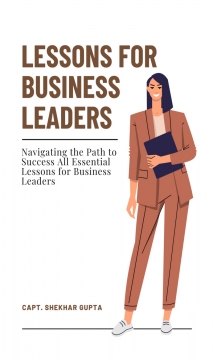Identifying Key Hiring Needs and Roles in Start-Ups
Identifying Key Hiring needs and roles is a critical step in the Talentt acquisition and recruitment process. It involves assessing the organization's current and future needs, understanding its strategic objectives, and determining the positions that are essential for achieving those objectives. Here are some steps to help identify Key Hiring needs and roles:Identifying key hiring needs and roles in start-ups is crucial for building a strong and successful team that can drive the company's growth and innovation. Start-ups often operate with limited resources and face unique challenges, so making the right hiring decisions is vital. Here are some essential steps to identify key hiring needs and roles in start-ups:
Assess Current Team:
Start by evaluating your current team's skills and expertise. Identify any critical gaps that need to be filled to achieve your company's goals. Consider both technical and non-technical skills required for various functions.
Define Your Business Strategy:
Clearly articulate your start-up's short-term and long-term goals, as well as the strategic direction. This will help determine the specific roles and talents needed to execute your plans successfully.
Prioritize Roles:
Determine the roles that are most critical for your business at its current stage. Focus on positions that directly contribute to your core product/service development and those that enhance your go-to-market strategy.
Identify Skill Shortages:
Identify areas where your existing team lacks expertise or experience. These skill shortages are potential areas for hiring new talent.
Consider Cross-Functional Roles:
In a start-up environment, employees may need to wear multiple hats and handle various responsibilities. Look for candidates who can excel in cross-functional roles, especially in the early stages.
Emphasize Core Competencies:
Prioritize hiring individuals who align with your start-up's core values and culture. Cultural fit is crucial for a close-knit team that can collaborate effectively.
Seek Problem-Solvers and Innovators:
Start-ups require employees who can adapt quickly, solve problems creatively, and think innovatively. Look for candidates who demonstrate an entrepreneurial mindset.
Be Lean and Agile: Start with essential hires and focus on building a lean, agile team that can quickly respond to market changes and scale as needed.
Leverage Outsourcing and Contractors:
Consider utilizing outsourcing or hiring contractors for non-core functions initially. This approach allows your start-up to access specialized skills without committing to full-time positions.
Stay Flexible:
As a start-up, you may need to adapt your hiring needs and roles based on market conditions, funding, and the evolving needs of your business. Be flexible in your approach and continuously reassess your hiring strategy.
Network and Engage:
Attend industry events, networking sessions, and startup meetups to meet potential hires and build relationships with talented individuals who may be interested in joining your team.
Offer Equity and Growth Opportunities:
By following these steps and conducting thorough assessments, you can identify the key hiring needs and roles that will form the foundation of a strong and successful team in your start-up. Remember that hiring the right people is one of the most critical factors in determining the success of a start-up, so take the time to make well-informed decisions.
Conduct Workforce Planning:
Review the organization's business goals and long-term objectives.
Identify areas of growth and expansion that require additional staffing.
Analyze the existing workforce to identify potential skill gaps or areas where specialized expertise is needed. Consider the impact of technological advancements, industry trends, and changes in the marketplace on future Talentt needs.
Collaborate with Department Heads :
Consult with department heads and managers to understand their specific staffing requirements.
Discuss upcoming projects or initiatives that may require additional workforce support.
Obtain insights into the skills and qualities they seek in potential candidates for their teams.
Job Analysis and Job Descriptions:
Conduct a thorough job analysis for each role to be filled.
Develop comprehensive job descriptions that outline the responsibilities, qualifications, and experience required for each position.
Clearly define the roles and expectations to attract the right candidates.
Consider Succession Planning:
Evaluate whether there are potential internal candidates who could be promoted to higher positions in the future.
Identify Key positions that require a succession plan to ensure a smooth transition in case of employee turnover or advancement.
Prioritize Critical Roles:
Determine which roles have the most significant impact on the organization's success.
Prioritize roles that are crucial for achieving short-term and long-term objectives.
Focus on roles that require specialized skills or experience that may be difficult to find.
Anticipate Future Needs:
Predict future trends and changes in the industry and workforce.
Consider how emerging technologies or shifts in customer preferences may influence Hiring needs.
Be proactive in preparing for future Talentt requirements.
Review Budget and Resources:
Evaluate the organization's budget and available resources for Hiring.
Determine if there are financial constraints that may affect the Hiring process or the number of positions that can be filled.
Seek Input from Employees:
Gather feedback from current employees on areas where additional support is needed.
Conduct employee surveys or hold focus groups to identify pain points and potential Hiring needs.
By following these steps and involving Key stakeholders within the organization, you can effectively identify the Key Hiring needs and roles that will contribute to the success and growth of the company. This proactive approach ensures that you are well-prepared to attract and recruit the right Talentt when the need arises.
Since start-ups often have limited budgets, offering equity or stock options can be an attractive incentive for potential hires. Additionally, emphasize the growth opportunities and potential for career advancement within your start-up.
Kajol Kapura Soren
HR Head
10BestInCity.com
Kajol@10BestInCity.com


.jpg)







.jpg)

.jpg)